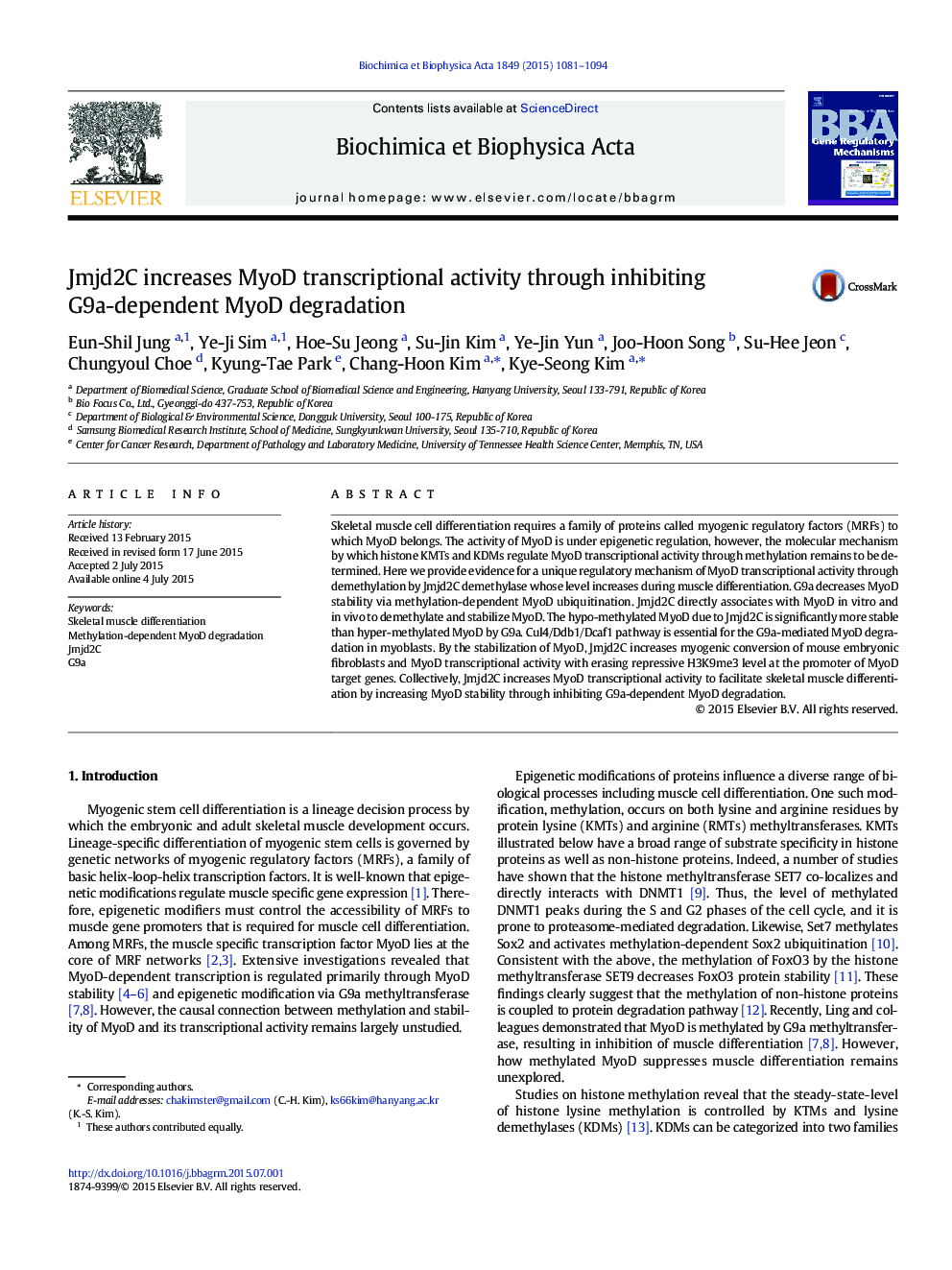| Article ID | Journal | Published Year | Pages | File Type |
|---|---|---|---|---|
| 10799025 | Biochimica et Biophysica Acta (BBA) - Gene Regulatory Mechanisms | 2015 | 14 Pages |
Abstract
Skeletal muscle cell differentiation requires a family of proteins called myogenic regulatory factors (MRFs) to which MyoD belongs. The activity of MyoD is under epigenetic regulation, however, the molecular mechanism by which histone KMTs and KDMs regulate MyoD transcriptional activity through methylation remains to be determined. Here we provide evidence for a unique regulatory mechanism of MyoD transcriptional activity through demethylation by Jmjd2C demethylase whose level increases during muscle differentiation. G9a decreases MyoD stability via methylation-dependent MyoD ubiquitination. Jmjd2C directly associates with MyoD in vitro and in vivo to demethylate and stabilize MyoD. The hypo-methylated MyoD due to Jmjd2C is significantly more stable than hyper-methylated MyoD by G9a. Cul4/Ddb1/Dcaf1 pathway is essential for the G9a-mediated MyoD degradation in myoblasts. By the stabilization of MyoD, Jmjd2C increases myogenic conversion of mouse embryonic fibroblasts and MyoD transcriptional activity with erasing repressive H3K9me3 level at the promoter of MyoD target genes. Collectively, Jmjd2C increases MyoD transcriptional activity to facilitate skeletal muscle differentiation by increasing MyoD stability through inhibiting G9a-dependent MyoD degradation.
Keywords
Related Topics
Life Sciences
Biochemistry, Genetics and Molecular Biology
Biochemistry
Authors
Eun-Shil Jung, Ye-Ji Sim, Hoe-Su Jeong, Su-Jin Kim, Ye-Jin Yun, Joo-Hoon Song, Su-Hee Jeon, Chungyoul Choe, Kyung-Tae Park, Chang-Hoon Kim, Kye-Seong Kim,
